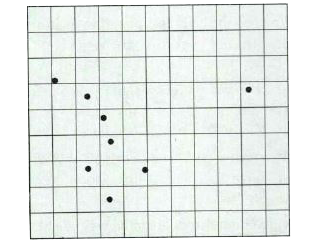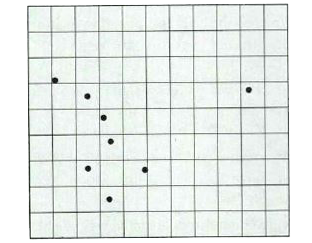Complete Solutions to CLASSROOM CORNER (A. Very Short Answer Type Questions) Comprehension-Based Questions of chapter STARS AND THE SOLAR SYSTEM of Class 8 book with complete answers and questions
| Class 8 | PHYSICS |
| Chapter | STARS AND THE SOLAR SYSTEM |
| PEARSON IIT JEE FOUNDATION | CLASSROOM CORNER (A. Very Short Answer Type Questions) Comprehension-Based Questions |
| Number Of Questions | 5 |
| Academic Year | 2023-24 |
Our universe consists of a number of heavenly bodies or celestial objects. We can see many of these objects in the sky. However, there are still many others that are distant and are not visible to us from the Earth. In the table given below, name and define (in your own words) any four celestial objects present in the universe.
 04:36View Solution
04:36View SolutionTo locate Pole star, you have to look at the two stars at the end of Ursa Major as shown. Imagine a straight line passing through these two stars. Extend this imaginary line towards the north direction. On this line you can locate a star which is not too bright and around which there are no stars. It is the Pole Star. The pole star always appears to remain at the same position in the sky.

Read the passage and try to answer the question
Name one star in the sky that appears to be fixed at one point.02:40View SolutionTo locate Pole star, you have to look at the two stars at the end of Ursa Major as shown. Imagine a straight line passing through these two stars. Extend this imaginary line towards the north direction. On this line you can locate a star which is not too bright and around which there are no stars. It is the Pole Star. The pole star always appears to remain at the same position in the sky.

Read the passage and try to answer the question
What is the significance of pole star for astronomers and travelers in ancient times?View SolutionTo locate Pole star, you have to look at the two stars at the end of Ursa Major as shown. Imagine a straight line passing through these two stars. Extend this imaginary line towards the north direction. On this line you can locate a star which is not too bright and around which there are no stars. It is the Pole Star. The pole star always appears to remain at the same position in the sky.

Read the passage and try to answer the question
Give the location of this star.01:41View SolutionTo locate Pole star, you have to look at the two stars at the end of Ursa Major as shown. Imagine a straight line passing through these two stars. Extend this imaginary line towards the north direction. On this line you can locate a star which is not too bright and around which there are no stars. It is the Pole Star. The pole star always appears to remain at the same position in the sky.

Read the passage and try to answer the question
The stars that we see in the sky are not fixed at one point. Explain why?View Solution
CLASSROOM CORNER (A. Very Short Answer Type Questions) Comprehension-Based Questions questions and complete solutions for chapter STARS AND THE SOLAR SYSTEM of PEARSON IIT JEE FOUNDATION of Class 8
All Exercises from PEARSON IIT JEE FOUNDATION Class 8 PHYSICS STARS AND THE SOLAR SYSTEM
- CLASSROOM CORNER (A. Very Short Answer Type Questions) Assertion-Reason Type Questions
- CLASSROOM CORNER (A. Very Short Answer Type Questions) Comprehension-Based Questions
- CLASSROOM CORNER (A. Very Short Answer Type Questions) Multiple Choice Questions
- CLASSROOM CORNER (A. Very Short Answer Type Questions) Subjective Type Questions
- CLASSROOM CORNER (B. Short Answer Type Questions)
- CLASSROOM CORNER (C. Long Answer Type Questions)
- COMPETITION CORNER
- HOTS - HIGHER ORDER THINKING SKILLS
- MASTER YOUR TEST (SOLVED EXAMPLE)
- Track Your Learning-I
- Track Your Learning-II
- Track Your Learning-III
- Track Your Learning-IV
- Track Your Learning-V
- Track Your Learning-VI
